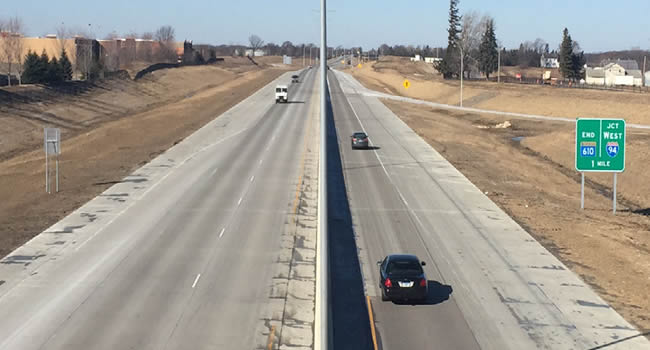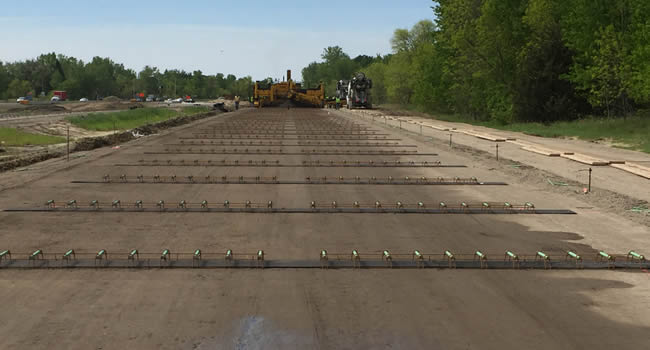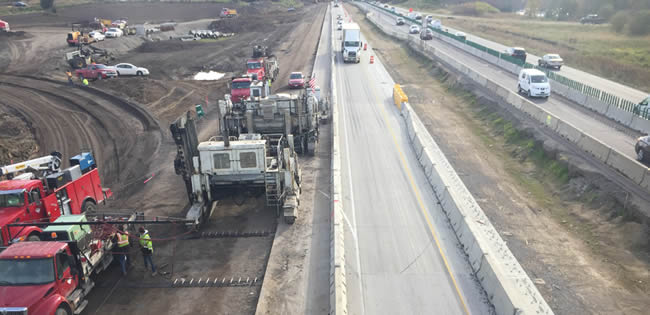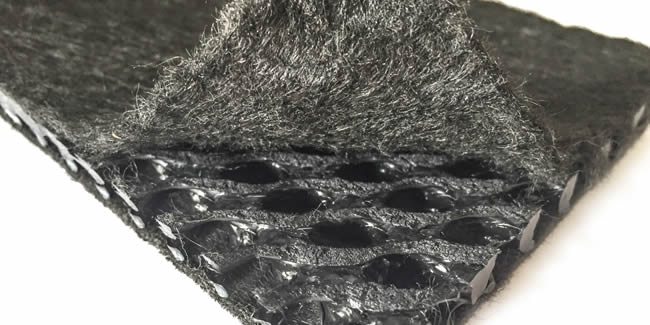By GSE Environmental – Repairing damaged expansion joints in rigid pavements is a costly endeavor. Not only is the cost of the repairs high, but repair projects can go on for miles and shut down vital lanes of traffic important to commuters and local commerce.
The primary cause of premature damage is insufficient drainage under rigid pavements.

MANAGING EXPANSION JOINTS
Expansion joints are particularly troublesome because they provide a direct path for surface water into the base materials. Free water in the joints combined with continued traffic creates hydrostatic pressures capable of eroding the base materials and the concrete itself, leading to costly repairs.
In recent years, the Minnesota Department of Transportation (MnDOT) has relied on permeable asphalt stabilized base (PASB) layers under high-volume rigid pavements. While usually effective, these are complex and costly layers to construct and offer varying degrees of performance.

RELATED: New Geocomposite Drainage System for Roadways
MINNESOTA PROJECTS & MONITORING
In 2013, personnel from MnROAD, MnDOT’s Road Research Facility, cut narrow strips of GSE RoaDrain™ 7. The strips were installed in conjunction with load transfer dowels at the location of the future expansion joints in a rigid pavement system. The project entailed an elaborate monitoring system measuring moisture levels in the base and movements in the pavement.
The GSE RoaDrain geocomposite drainage system is engineered to provide high compressive strength (> 50,000 psf), a permeability greater than 10x that of drainage stone, and long-term performance under roads and at expansion joints to provide an effective capillary break that stops the upward migration of excess moisture and helps quickly and efficiently remove water from the system before roadway deterioration. The solution is composed of a tri-planar geonet that is made of high-strength HDPE and a geocomposite drainage system that utilizes a 6 oz. nonwoven needle-punched geotextile for separation, filtration, and durability.

The RoaDrain synthetic subsurface drainage layer line involves three variations (MD, RD, JD) for specific roadway situations. The JD series is for installation only at expansion joints to control that critical entry point for water.
Early results from Minnesota have confirmed that water entering the joints is quickly evacuated from under the pavement via the RoaDrain strips, keeping the base materials dry and improving the pavement’s performance.
Interstate 694, the northern loop around Minneapolis and Saint Paul, was one of three projects in the state to utilize the RoaDrain JD this same year. US 61 in Forest Lake, MN and SR 610 near Osseo, MN also incorporated the RoaDrain JD. In all three projects, RoaDrain JD eliminated the PASB. Having adequate drainage at the joints also eliminated the need to seal the pavement joints.
Learn more about GSE Environmental’s drainage solutions and other geosynthetics at www.gseworld.com. See additional case studies involving RoaDrain at expansion joints and in other roadway zones as well as other GSE stories in the company’s Knowledge Library.

EDITOR’S NOTE: Geosythetica’s editorial and design offices are based in the Twin Cities are of Minnesota. We drive the roads referenced in this story and related GSE case studies on MnDOT’s incorporation of solutions like RoaDrain. Geosynthetics are, truly, everywhere; but, the average person does not see them. Here on the publication, we always appreciate the opportunity to visit job sites or to know what materials are being used in our local infrastructure.











